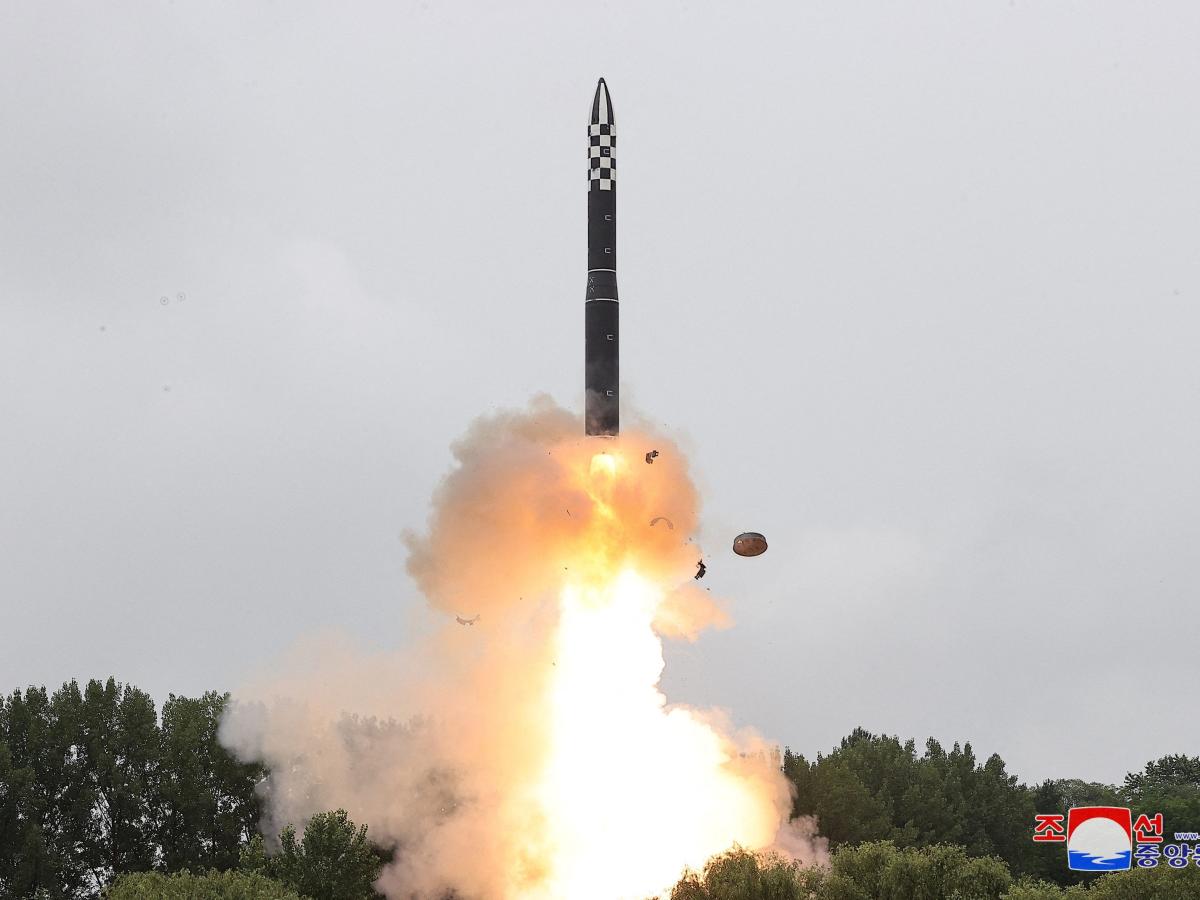-
North Korea tested its new Hwasong-18 intercontinental ballistic missile last month.
-
The new IBCM uses “solid-fueled” technology, elevating the threat posed by North Korea.
-
Experts say that Russia likely provided the technology to make it happen.
North Korea’s intercontinental ballistic missile is its most threatening yet, and it likely has Russia to thank, experts say.
The Center for Strategic and International Studies, a Washington, DC-based international affairs thinktank, said in a recent report that North Korea’s July 12 Hwasong-18 ICBM test launch was “likely the result of technical cooperation sourced to Russia.”
North Korean dictator Kim Jung Un hosted Russian and Chinese officials in July, showing them its arsenal of missiles capable of carrying nuclear warheads. The North Korean Hwasong-18 ICBM was among them. It is a nuclear-capable missile that the country developed in defiance of the UN’s attempt to regulate North Korea’s nuclear weapons program.
According to the CSIS report, the Hwasong-18 is “equipped to penetrate existing US ballistic missile defenses with countermeasures.”
The report says the Hwasong-18 is a solid-fueled ICBM, different from the liquid-fueled ICBMs that North Korea has tested over the past few years. The missile is capable of delivering “substantial payloads” at intercontinental range while also deploying “decoy canister countermeasures,” according to the report.
The new technology also allows North Korea to fire the missile more quickly, preventing possible detection and intervention from other governments before it is fired.
“The sudden appearance of these advanced capabilities is difficult to explain without cooperation from the Russian government and its scientists,” the report says.
Additionally, the flight trajectory data and the physical dimensions of the Hwasong-18 are “nearly identical to that of the Russian Topol-M ICBM,” according to the report.
“A Hwasong-18 missile force will require the United States to consider additional concepts for missile defense, including the use of airborne drone interceptors,” the report says.
Read the original article on Business Insider







